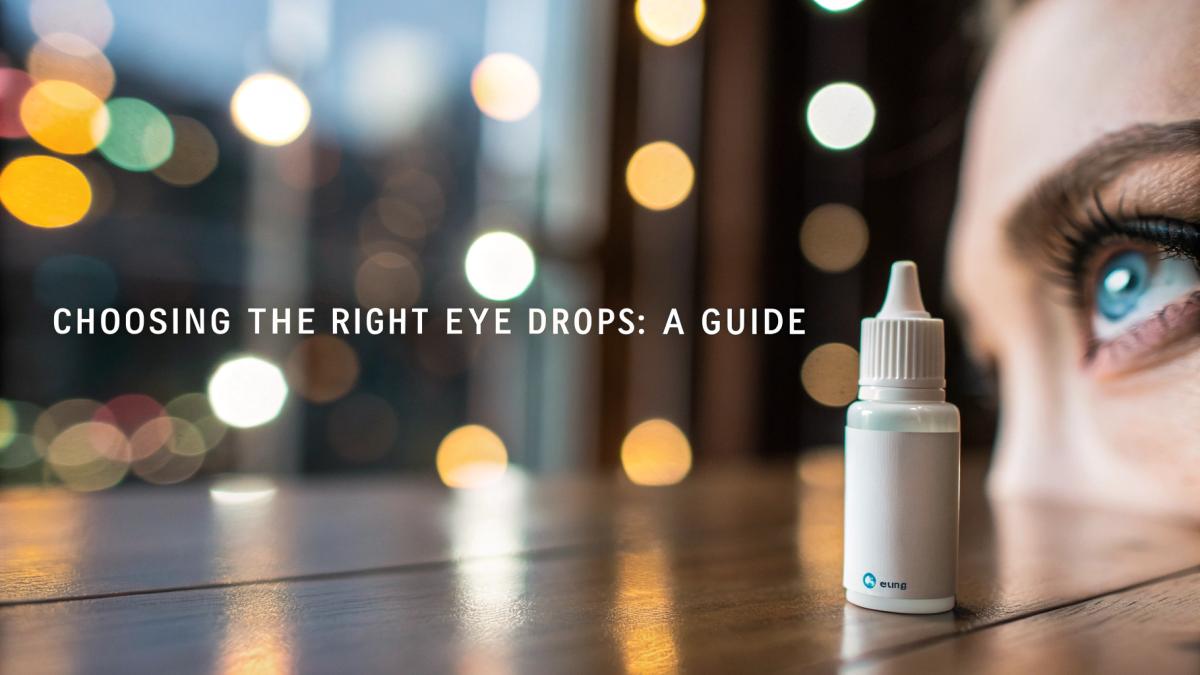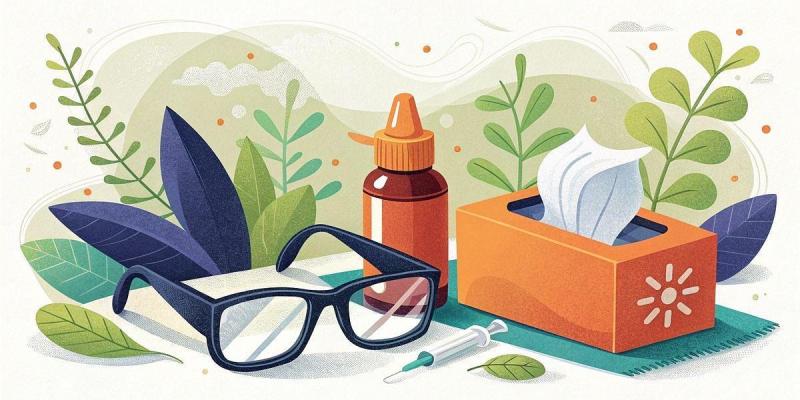Identifying Your Eye Condition: The Key to Choosing the Right Eye Drops
Before purchasing any eye drops, it is important to identify the specific eye condition that you are experiencing. Eye drops are formulated to target different eye conditions, and selecting the right one can greatly improve your symptoms.
Dry Eyes
Dry eyes occur when your tear ducts do not produce enough tears or produce poor-quality tears. Symptoms include itching, burning, and redness. Look for eye drops that lubricate and moisturize the eyes. Avoid eye drops that claim to “get the red out” as they can further dry out your eyes.
Allergies
Allergies can cause itchy, red, and swollen eyes. Look for antihistamine eye drops to relieve the symptoms of allergies. Some eye drops contain both antihistamines and lubricants to relieve itching while also moisturizing the eyes.
Conjunctivitis, or pink eye, is an inflammation of the conjunctiva. It can be caused by allergies, bacteria, or viruses. If you suspect that you have conjunctivitis, consult your doctor before using any eye drops. Your doctor may prescribe antibiotic eye drops to treat bacterial conjunctivitis.
Glaucoma is a serious eye condition that can lead to vision loss if left untreated. It is caused by increased pressure in the eye. If you have glaucoma, your doctor may prescribe eye drops that reduce the pressure in your eye. Do not use any eye drops without consulting your doctor if you have glaucoma.
Cataracts occur when the lens of the eye becomes cloudy. Eye drops cannot treat cataracts, and surgery is often required to remove them.
By identifying your eye condition and selecting the appropriate eye drops, you can alleviate your symptoms and improve the overall health of your eyes. Remember to always consult your doctor before using any eye drops, especially if you have an underlying eye condition.
Factors to Consider When Choosing Eye Drops: From Ingredients to Delivery Method
Eye drops come in a wide variety of types and are designed to target various eye conditions, from dry eyes to allergies. Choosing the right eye drops requires careful consideration of several factors, including ingredients, delivery method, and intended purpose. Here are some things to keep in mind when selecting eye drops:
Type of Eye Drops
There are several types of eye drops, each designed to treat specific eye problems. Some of the most common include:
- Artificial tears for dry eyes
- Antihistamines for allergies
- Vasoconstrictors for redness
- Eye lubricants for contact lens wearers
Active Ingredients
The active ingredients in eye drops determine what conditions the drops are designed to treat. Be sure to read the label carefully and choose eye drops with ingredients that match your particular needs.
Preservatives
Some eye drops contain preservatives to prevent bacteria growth and keep the drops fresh. However, some people may be sensitive to these preservatives and experience adverse reactions, such as burning and stinging sensations. If you have sensitive eyes, opt for preservative-free eye drops.
Delivery Method
Eye drops can be delivered in several ways, including:
- Dropper bottles
- Squeeze bottles
- Pump bottles
- Preservative-free vials/single-use packets
The delivery method you choose will depend on your personal preference and the intended use of the eye drops. For example, drop bottles may be more challenging to use for people with mobility or vision issues.
Duration of Effectiveness
Some eye drops provide temporary relief, while others can last for several hours or even all day. Consider the duration of the drops' effectiveness when choosing them to determine how often you will need to reapply them.
Choosing the right eye drops can provide effective relief for a variety of eye conditions. By considering factors such as active ingredients, delivery method, and duration of effectiveness, you can select the right eye drops that meet your needs.
Making the Right Choice: A Step-by-Step Guide to Selecting the Best Eye Drops for You
Eye drops are a quick and easy way to soothe dry or irritated eyes. However, with so many options available on the market, it can be challenging to determine which ones are the best for your individual needs. Here’s a step-by-step guide to help you select the ideal eye drops for you.
Step 1: Determine the Cause of Your Eye Irritation
Before choosing an eye drop, it’s important to identify what’s causing your eye irritation. Is it allergies, dryness, infection or something else? With the root of the problem sorted out, you will be better equipped to choose an eye drop designed to tackle that condition.
Step 2: Consult with Your Eye Doctor
If you're not sure what is causing your eye irritation, it’s always a good idea to talk to an eye doctor. They can determine the underlying cause and advise you on the appropriate treatment. They can also suggest a brand that best addresses your specific condition.
Step 3: Choose the Right Type of Eye Drops
There are different types of eye drops designed to relieve different eye issues. The most common ones are artificial tears, redness-reducing drops, allergy drops, and prescription drops. Artificial tears are best for lubricating dry eyes while redness-reducing drops are ideal if you suffer from bloodshot eyes. Allergy drops come in handy for those experiencing irritated, itchy, and watery eyes, while prescription eye drops treat specific eye conditions.
Step 4: Know What to Look for on the Label
When selecting eye drops, always read the label for the ingredients, dosage, and usage instructions. Avoid products that contain preservatives because they can cause further irritation, particularly if you intend to use them frequently. Consider also if you want to use a product that is free of added chemicals such as dyes or fragrances, which might trigger allergies.
Step 5: Check the Expiration Date
Make sure to check the expiration date on the label. Over time, eye drops can lose their effectiveness and may even introduce harmful bacteria into the eye. Always dispose of any product that has expired or is cloudy or discolored.
By following these simple steps, you will be able to choose the best eye drops for your needs to soothe your dry, irritated, or allergy-affected eyes with ease.



